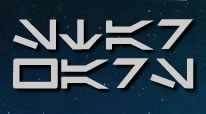 |
 |
 |
||||||||
 |
||||||||||
|
Rules to play SWmud – This site optimized for: |
SWmud Mail Commands
In the text below the most common commands in the mail shell will be briefly discussed. For more information on those commands, and other commands, refer to the help files in the mail system (by typing ? while in the mail shell).
Delete:
Typing d will mark the current letter
(most recently read letter in the current mail session) for deletion.
d # will mark mail number # for deletion.
When you close the mail shell with q,
all letters marked for deletion will be deleted (and lost forever! Even
admins will not be able to retrieve them...no recycle bin here). See below
for how to unmark letters.
Unmark:
Typing u will unmark the current letter
from deletion, if it was marked for deletion. u
# will unmark letter number # from deletion. This command can be
used to correct any errors you may have made when marking letters for
deletion.
Reply:
There are two ways in which you can reply to a letter: with or without
quoting the original letter. r will
reply to the sender of the current letter.
R will reply to the sender of the current letter while quoting the original letter. r # or R # can be used to reply to letter #, R # quoting the original. For the reply command there are a few arguments possible to reply to all recipients of the original letter, or to all addressed of the original letter, refer to the help file in the mail shell for more information on this.
Forward:
There are two ways in which you can forward a mail: with or without comment.
f (recipient) will forward the current
mail to (recipient), while f # (recipient)
forwards letter number # to (recipient). Using F
instead of f allows you to add comment
before the forwarded mail. You will be put into mail edit directly, since
recipient and subject are already set. Closing your own text body is the
same as with a regular mail.
Quit:
To leave the mail shell, you can either use q
or Q. q
will delete all mails marked for deletion, while Q
will not delete marked mails, nor will it mark newly read mails as read.
Auto-forward:
This is a feature that is not documented and therefor unknown to most
people, but it is important to know about it nonetheless. What auto-forward
does is simple: Any mails send to you will automatically be send to the
recipient of the auto-forward instead. This means that you will NOT get
any messages in your mailbox (You will get the message that someone just
send you a mail though). Basically this means that you will not be reachable
by mail, until the auto-forward is removed. Of course this can be quite
annoying and confusing, since most auto-forwards are set by accident.
This problem is easy to solve though.
w (recipient) will set an auto-forward to (recipient). As explained, all mails that are addressed to you will automatically be send to (recipient) and will not show up in your mailbox.
w will clear the auto-forward, so you will receive mails like normal. So if you are not receiving any mails, while you think you should have gotten them, you could have accidentally set an auto-forward. So type mail, then type w, then q and you should be ok again.
Ed Help || Ed Reference || Mail || Mail2 || General Information Index || Game Information
|
 |
||||||